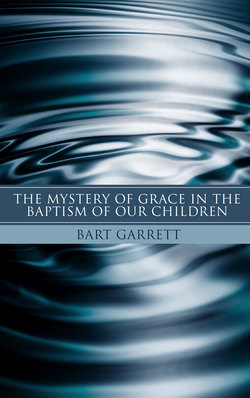Читать книгу The Mystery of Grace in the Baptism of Our Children (Stapled Booklet) - Bart Garrett - Страница 8
На сайте Литреса книга снята с продажи.
Chapter 3 Mode and Meaning
ОглавлениеSometimes pastors from other denominations voice their concerns to me about our practice of infant baptism, and their concerns can be lumped into two categories: (1) the mode of infant baptism, and (2) the meaning of infant baptism. The mode refers primarily to how much water is used in the application of baptism. Is water sprinkled over the one receiving the baptism? Or, is it poured? Is the person dipped in water or completely immersed under the water? This booklet will only address the meaning of baptism simply because, in my opinion, the mode of baptism is of little or no consequence. If you agree with me on this point, then feel free to skip over this section, but for those who might not, it is appropriate to offer my rationale, albeit a brief one.
When baptism is mentioned in the New Testament it often involves the subject “going down into the water” (Acts 8:38)5 and “coming up out of the water” (Matthew 3:16). It is only natural that many sincere people assume that this was an act of immersion, and then think that this particular action is normative for the rite of baptism today. 6 After all, if baptism symbolizes being buried with Jesus in death and then raised with him to newness of life,7 then it is only right to assume that immersing someone all the way under the water and then bringing them up again paints the clearest picture.8 Yet, by contrast, in the proper observance of the sacrificial system as outlined in the Old Testament, Israelites were usually identified with the atoning sacrifice that they carried into the Temple by having the blood of the animal sprinkled upon them9 or poured over the mercy seat of the Ark of the Covenant; they were never completely submerged in blood (thank goodness).
The Greek word for baptism (baptizo) has a much broader range of meaning (semantic range) than the tightly defined “to immerse.” Now, most certainly, “to immerse” is a valid translation, but so is “to wash,” “to dip,” “to sprinkle,” “to suffuse,” or “to pour.” The simple point is that what was meant by the term, baptizo, is not precisely clear to us today. Perhaps people were immersed completely, or perhaps they waded out into the water and then had the water sprinkled or poured over their heads. We are not sure. In fact, the only baptism in the New Testament that mentions the type of mode explicitly is the Baptism of the Holy Spirit in which the Spirit is poured over the church at Pentecost.10
